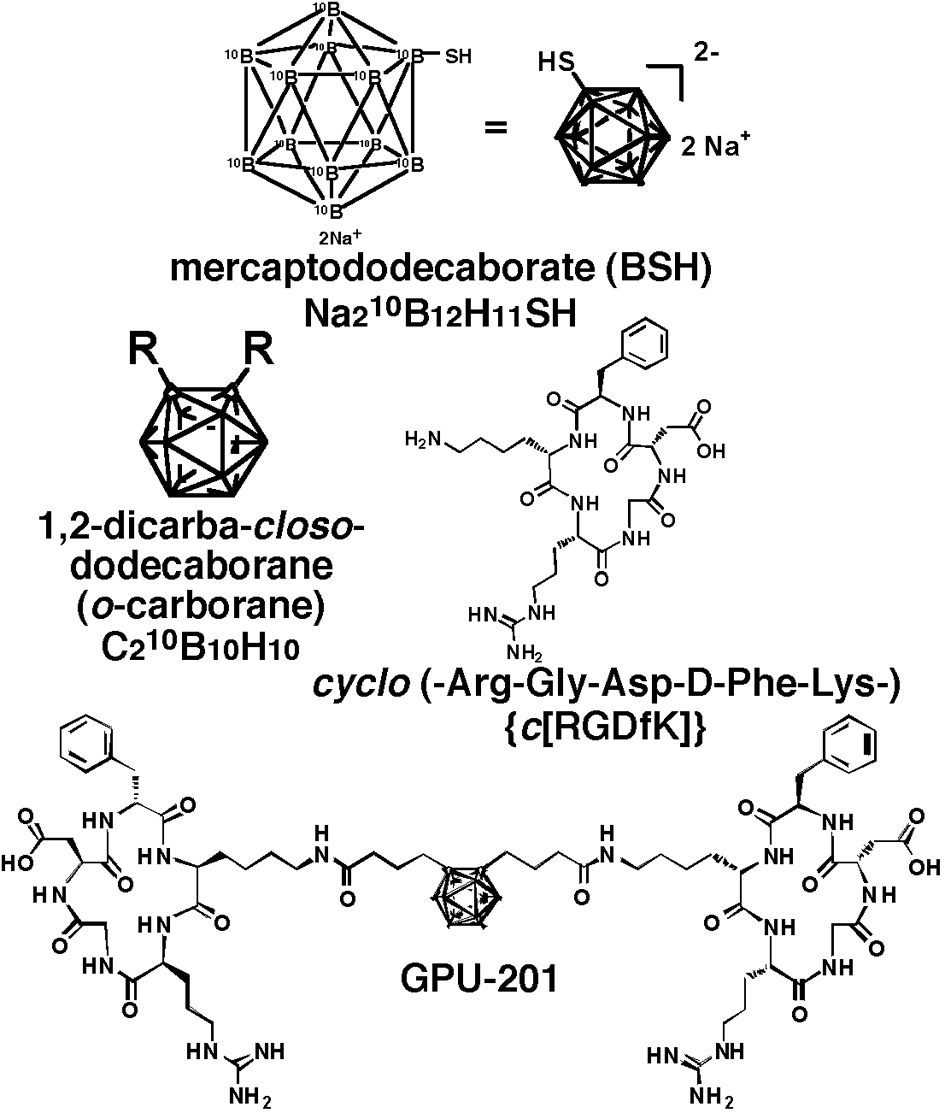
Figure 1. Chemical structure of disodium mercaptododecaborate-10B (BSH), 1, 2-dicarba-closo-dodecaborane (o-carborane), cyclo(-Arg-Gly-Asp-D-Phe-Lys-) {c(RGDfK)} and GPU-201.
| World Journal of Oncology, ISSN 1920-4531 print, 1920-454X online, Open Access |
| Article copyright, the authors; Journal compilation copyright, World J Oncol and Elmer Press Inc |
| Journal website http://www.wjon.org |
Original Article
Volume 3, Number 3, June 2012, pages 103-112
Evaluating the Usefulness of a Novel 10B-Carrier Conjugated With Cyclic RGD Peptide in Boron Neutron Capture Therapy
Figures

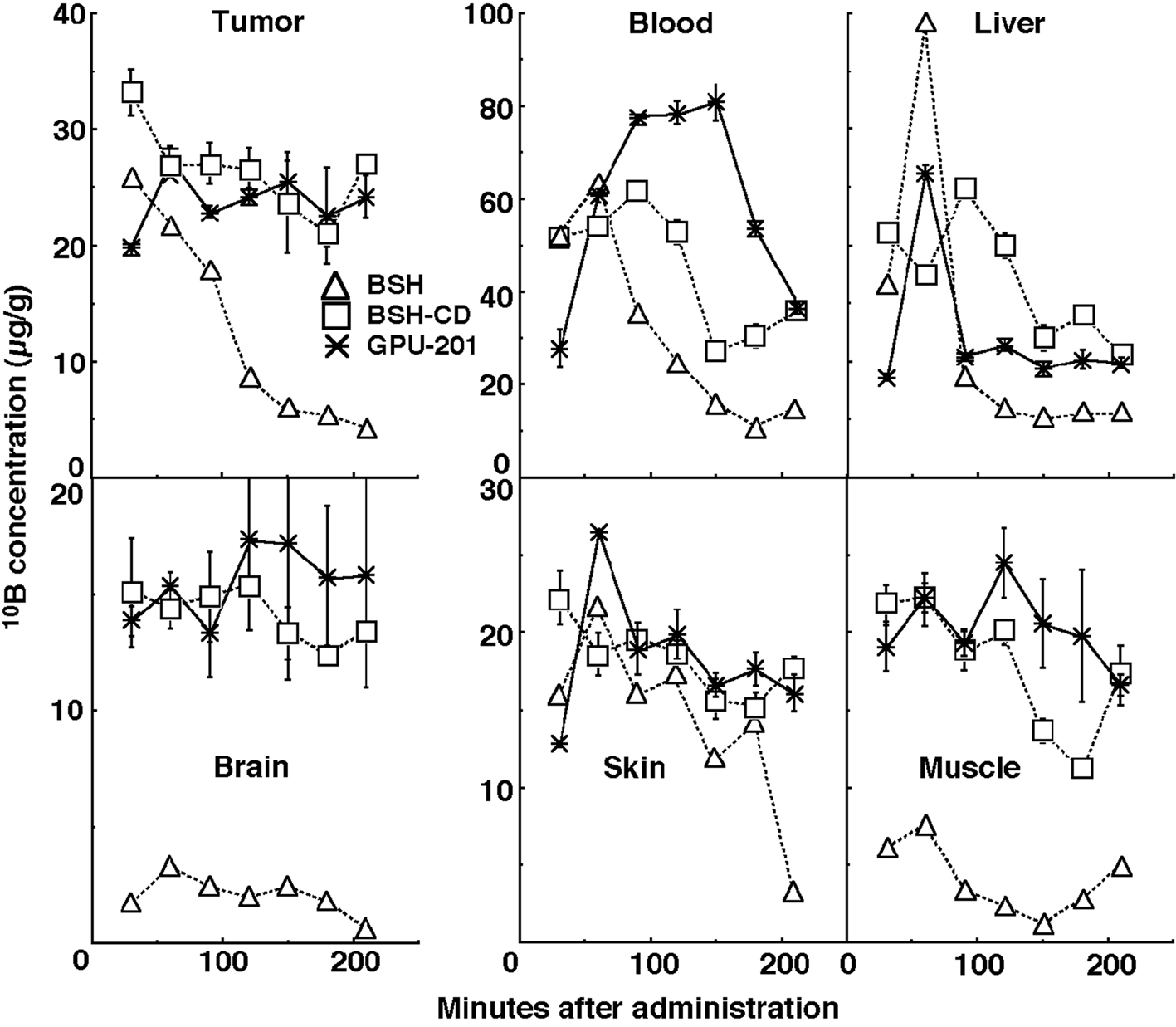
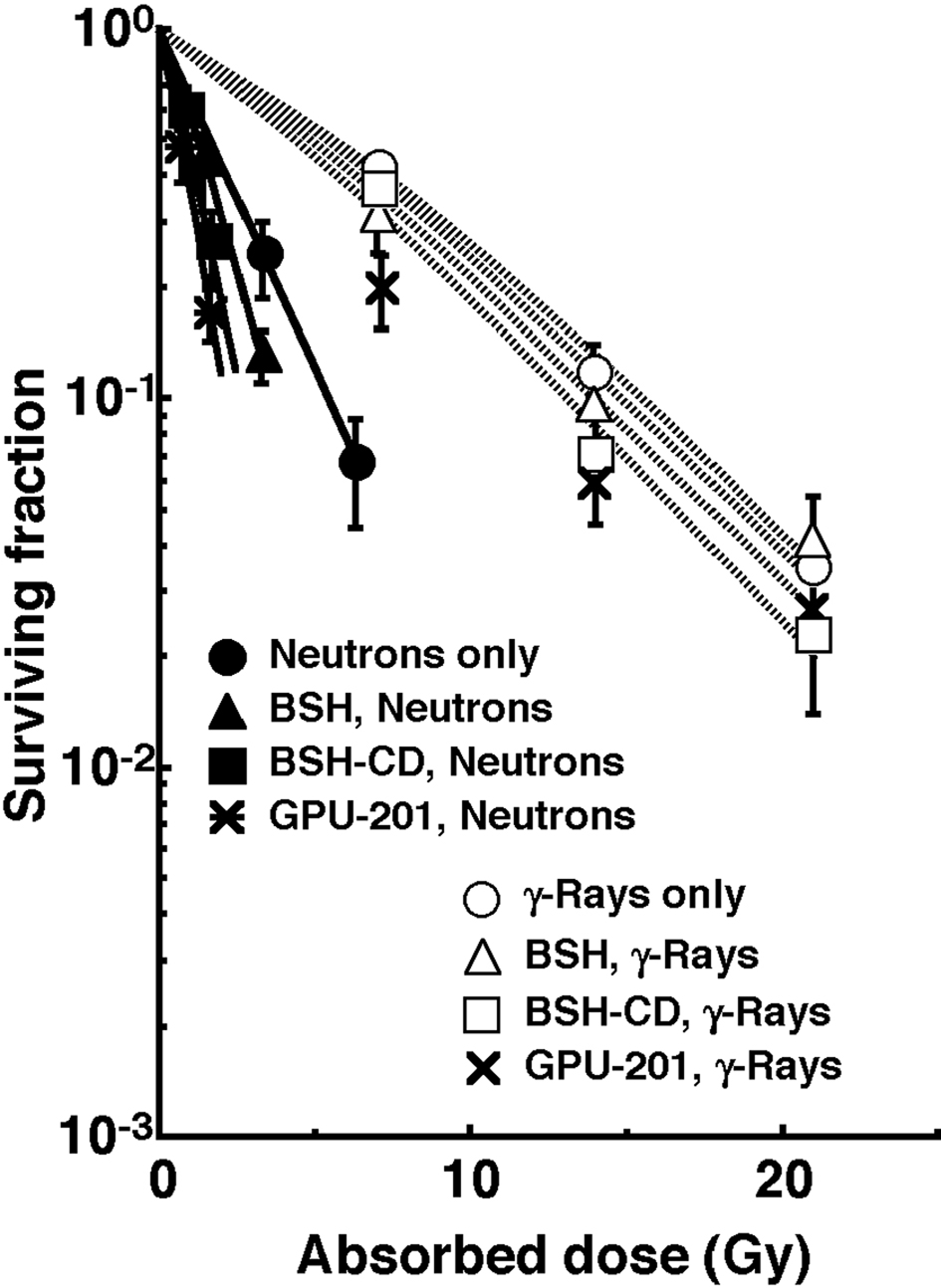
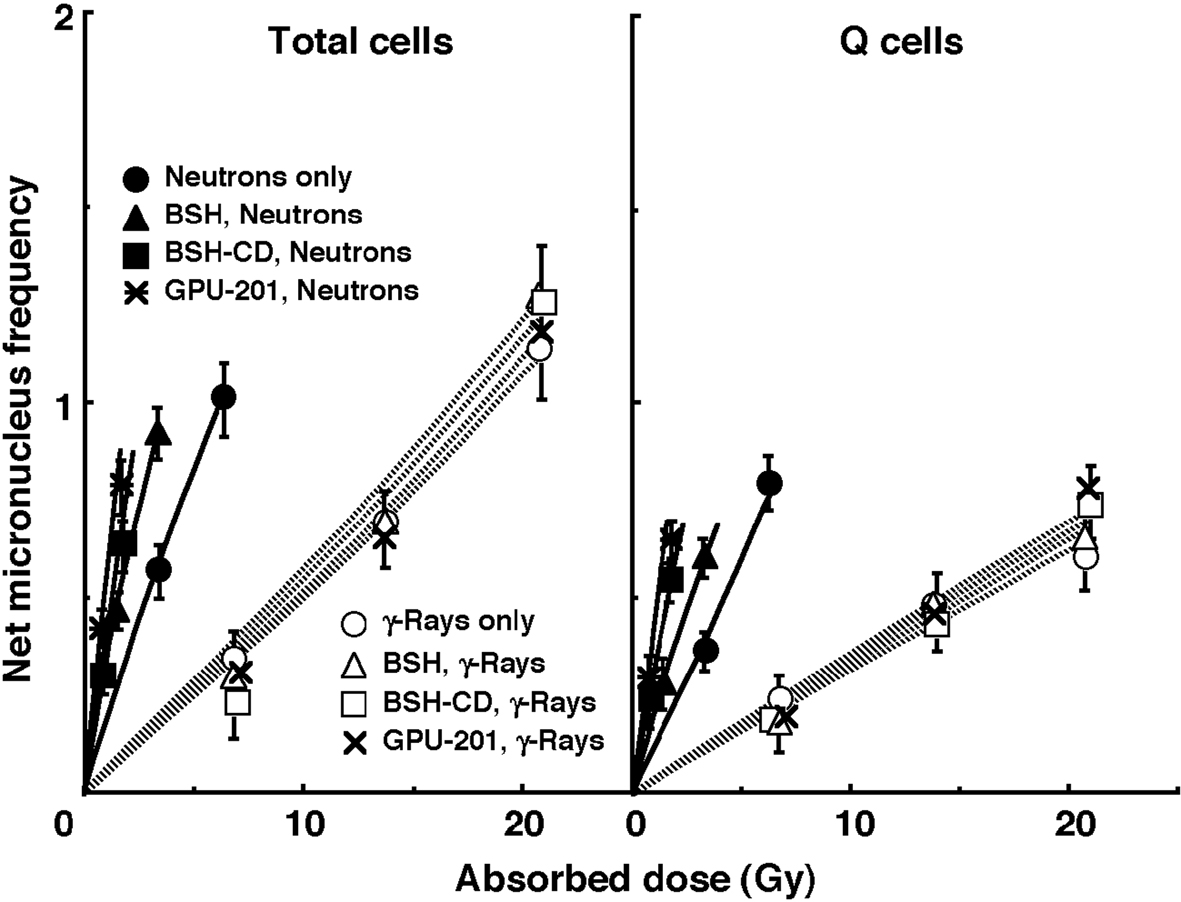
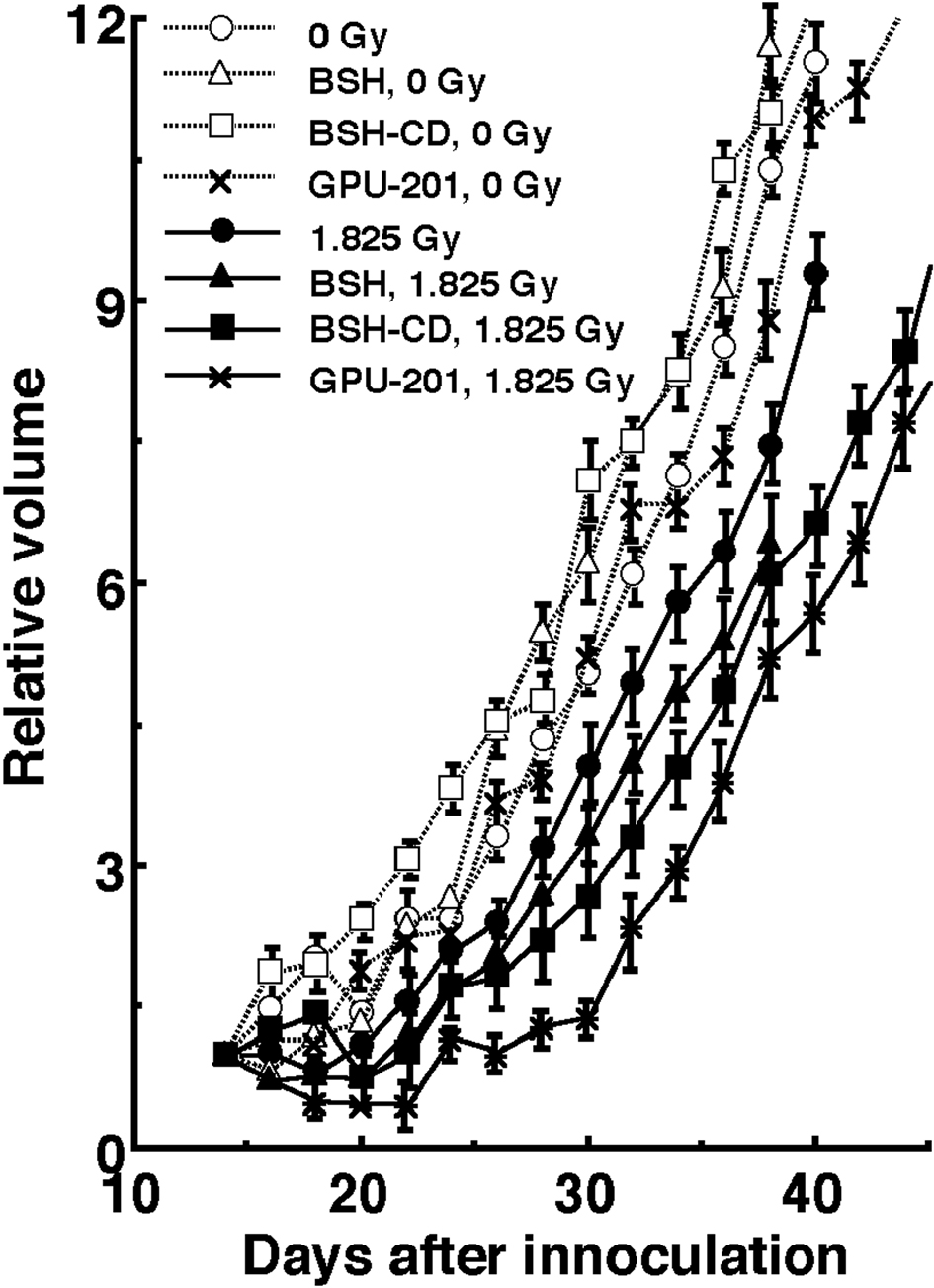
Tables
| No | 10B-carrier | BSH* | BSH-CD# | GPU-201# |
|---|---|---|---|---|
| *: Sodium borocaptate-10B dissolved in physiological (0.9%) saline; #: BSH and GPU-201 dissolved in physiological (0.9%) saline containing 10% 2-hydroxypropyl-β-cyclodextrin (HP-β-CD); **: Mean ± standard deviation (n = 9). | ||||
| Plating efficiency (%) Total cell population | 70.7 ± 8.8** | 64.0 ± 5.0 | 14.9 ± 1.7 | 14.3 ± 1.6 |
| Micronucleus frequency Total cell population | 0.027 ± 0.005 | 0.034 ± 0.004 | 0.067 ± 0.006 | 0.070 ± 0.007 |
| Quiescent cells | 0.053 ± 0.004 | 0.057 ± 0.005 | 0.090 ± 0.010 | 0.100 ± 0.012 |
| BSH# | BSH-CD** | GPU-201** | |
|---|---|---|---|
| *:The dose of radiation required to obtain each endpoint without a drug in relation to that required to obtain each endpoint with a drug; #: Sodium borocaptate-10B dissolved in physiological (0.9%) saline; **: BSH and GPU-201 dissolved in physiological (0.9%) saline containing 10% 2-hydroxypropyl-β-cyclodextrin (HP-β-CD); ##: Numbers in parentheses are 95% confidence limits, determined using mean values, standard deviations, and the numbers of observations on which the means and standard deviations were based. | |||
| Surviving fraction = 0.3 Total cell population | |||
| Neutron Beams | 1.4 (1.3-1.5)## | 1.7 (1.5-1.9) | 2.3 (2.1-2.5) |
| γ-Rays | 1.05 (1.0-1.1) | 1.15 (1.0-1.3) | 1.25 (1.1-1.4) |
| Net micronucleus frequency = 0.2 Total cell population | |||
| Neutron Beams | 1.8 (1.65-1.95) | 2.2 (1.9-2.5) | 3.2 (2.9-3.5) |
| γ-Rays | 1.05 (1.0-1.1) | 1.1 (1.0-1.2) | 1.15 (1.05-1.25) |
| Quiescent cells | |||
| Neutron Beams | 1.5 (1.35-1.65) | 1.5 (1.35-1.65) | 3.2 (2.9-3.5) |
| γ-Rays | 1.0 (1.0-1.1) | 1.05 (1.0-1.1) | 1.1 (1.0-1.2) |
| No 10B-carrier | BSH# | BSH-CD** | GPU-201** | |
|---|---|---|---|---|
| *:The dose of radiation required to obtain each net micronucleus frequency in quiescent tumor cells in relation to that required to obtain each net micronucleus frequency in the total tumor cell population; #: Sodium borocaptate-10B dissolved in physiological (0.9%) saline; **: BSH and GPU-201 dissolved in physiological (0.9%) saline containing 10% 2-hydroxypropyl-β-cyclodextrin (HP-β-CD); ##; Numbers in parentheses are 95% confidence limits, determined using mean values, standard deviations, and the numbers of observations on which the means and standard deviations were based. | ||||
| Net micronucleus frequency = 0.2 | ||||
| Neutron Beams | 1.25 (1.15-1.35)## | 1.7 (1.55-1.85) | 1.5 (1.4-1.6) | 1.25 (1.15-1.35) |
| γ-Rays | 1.7 (1.55-1.85) | 1.75 (1.6-1.9) | 1.75 (1.6-1.9) | 1.7 (1.55-1.85) |
| No 10B-carrier | BSH# | BSH-CD** | GPU-201** | |
|---|---|---|---|---|
| #: Sodium borocaptate-10B dissolved in physiological (0.9%) saline; **: BSH and GPU-201 dissolved in physiological (0.9%) saline containing 10% 2-hydroxypropyl-β-cyclodextrin (HP-β-CD); ##: Numbers in parentheses are 95% confidence limits, determined using mean values, standard deviations, and the numbers of observations on which the means and standard deviations were based. | ||||
| Without irradiation | 11.2 (9.7-12.7)## | 10.3 (9.0-11.6) | 8.6 (7.7-9.5) | 11.1 (9.5-12.7) |
| With irradiation at 1.825 Gy | 13.4 (11.9-14.9) | 15.0 (13.5-16.5) | 17.0 (15.2-19.8) | 20.0 (18.0-22.0) |